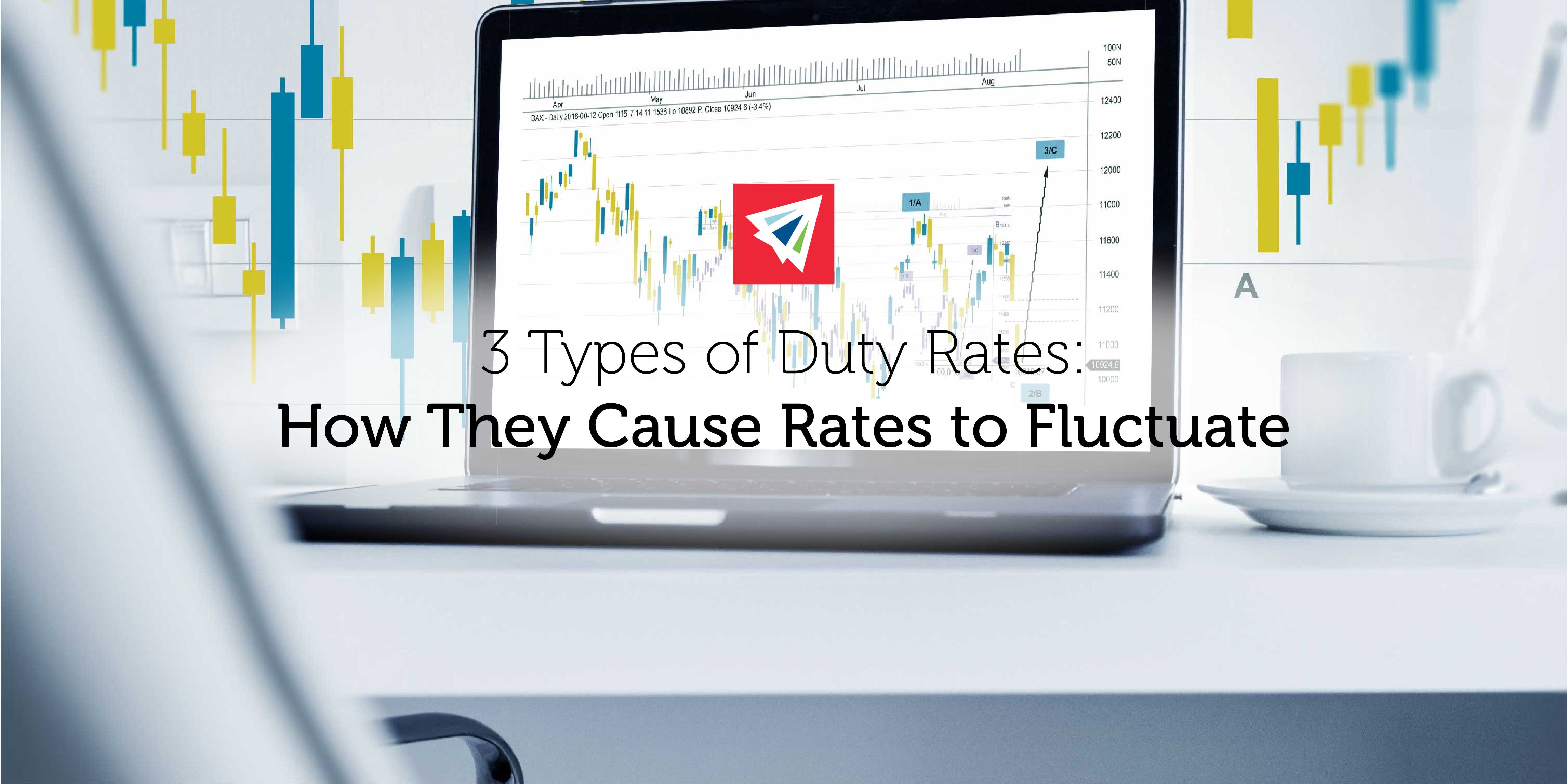Duty rates, (also referred to as import duties, customs duty, tariff rates, import tax, and import tariff,) are taxes collected on imports to the United States. This can also apply in reverse, whereby a duty is applied by a foreign country on an export from the United States. Tariff rates have two common purposes: 1) to promote and increase the market advantage of domestically produced goods, and 2) to raise income for the government in the importing country. The duty rate on any particular import varies greatly depending on the type of good, where it is being imported from, and a few other factors often defined by the HTS code.
Tariff Rates: The 3 Types
When importing the United States, the specific duty rate on an imported good can be found via the Harmonized Tariff Schedule (HTS), which contains thousands of codes ascribed to different goods. Since the final cost of the goods is the price paid for the goods in addition to the duty rate, buying domestically produced goods may end up being cheaper; thus satisfying one purpose of tariff rates. In the United States, when an import hits the border, the purchaser, customs broker, or Importer of Record files necessary shipping documents and pays for the duties to the Customs Agency to clear the goods for import.
Although duties are paid based on the type and amount of goods imported to the United States, there are a few different ways in which tariffs may be assigned to goods, thus causing the tariff due to fluctuate grandly.
Specific Tariff
A specific tariff is an import duty that is charged as a fixed dollar per unit of imported goods. For example, the specific tariff for an import of gasoline may be $0.18 per gallon. Therefore, if you are importing 21,000 liters (5,548 gallons) of gasoline to the United States, you will end up paying a tariff of $998.64 on the shipment.
Ad Valorem Tariff
An Ad Valorem Tariff is an import duty that is charged as a fixed percentage of the cost of one unit of the goods. This is why accurate documentation reports on the part of the Importer of Record are important, as the import duty is charged as a percentage of the monetary value of the good.
Preferential Duties
Preferential Duties are very low import duties (or duty-free imports) ascribed to certain goods based on their country of origin. The goal of preferential duties is to encourage the growth and development of smaller, less developed nations and countries. Import duties on the same type of good will be significantly higher if they are being imported from a country outside of the “preferred group.” These preferred groups or countries are listed in the Generalized System of Preferences (GSP.) In a way, these tariffs are discriminatory to certain countries in order to encourage growth of less-developed nations. Countries outside of the “preferred group” will often reap the benefits of this group’s low-duty imports by exporting their products to one of these preferred group countries for Value Added Services.
If you would like to learn more about tariff rates, or are curious as to how they may impact your pricing, call our team at Interlog USA and we would be happy to help you!

8 thoughts on “3 Types of Tariff Rates: How They Cause Rates to Fluctuate”